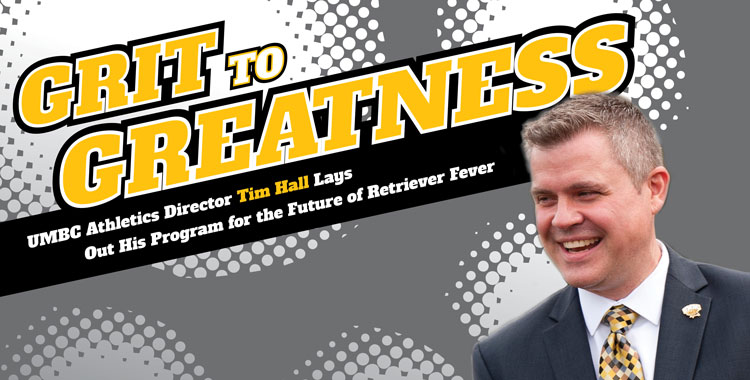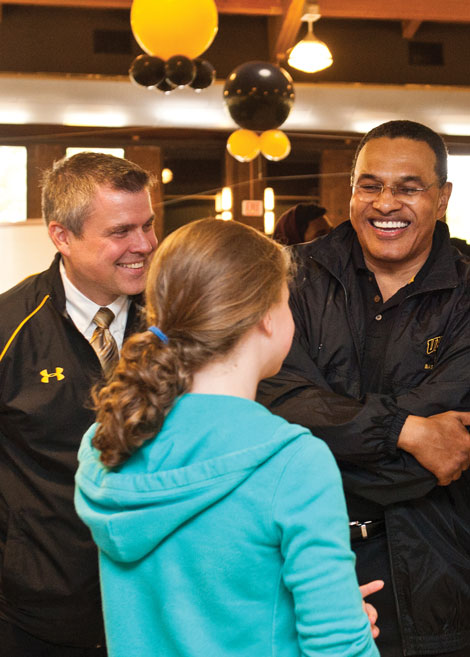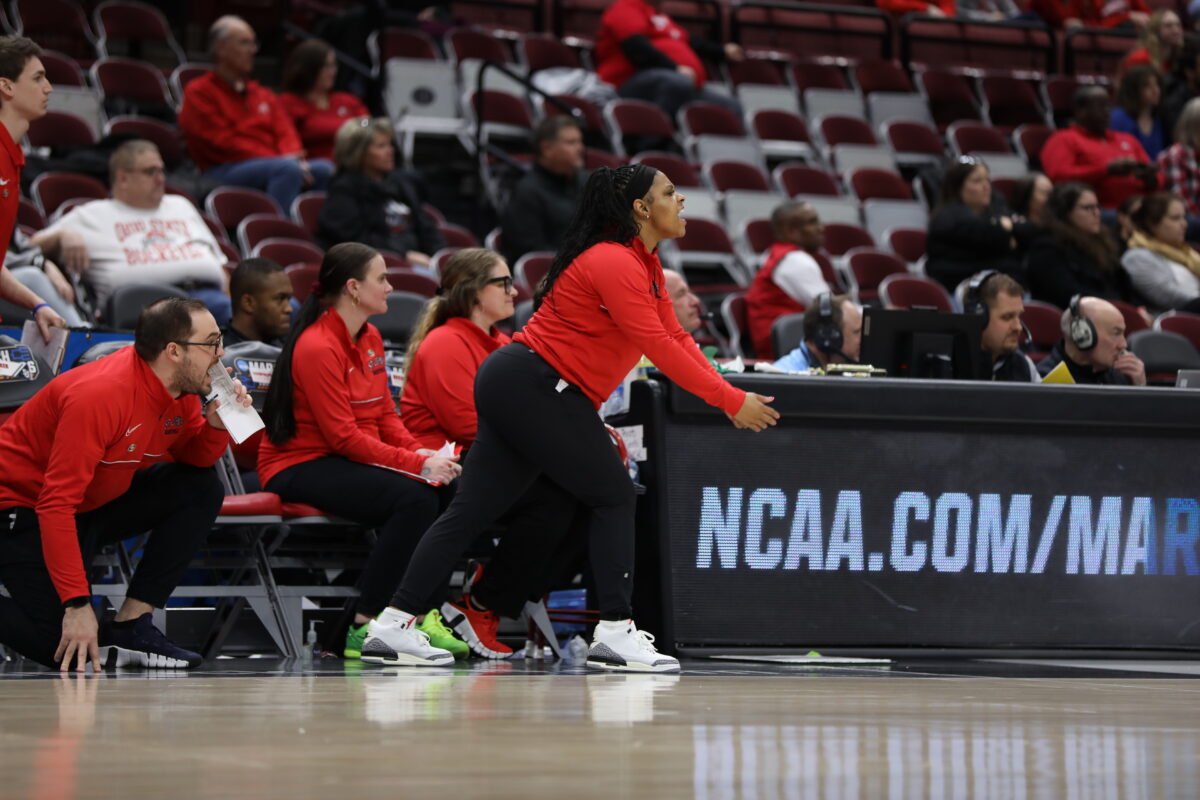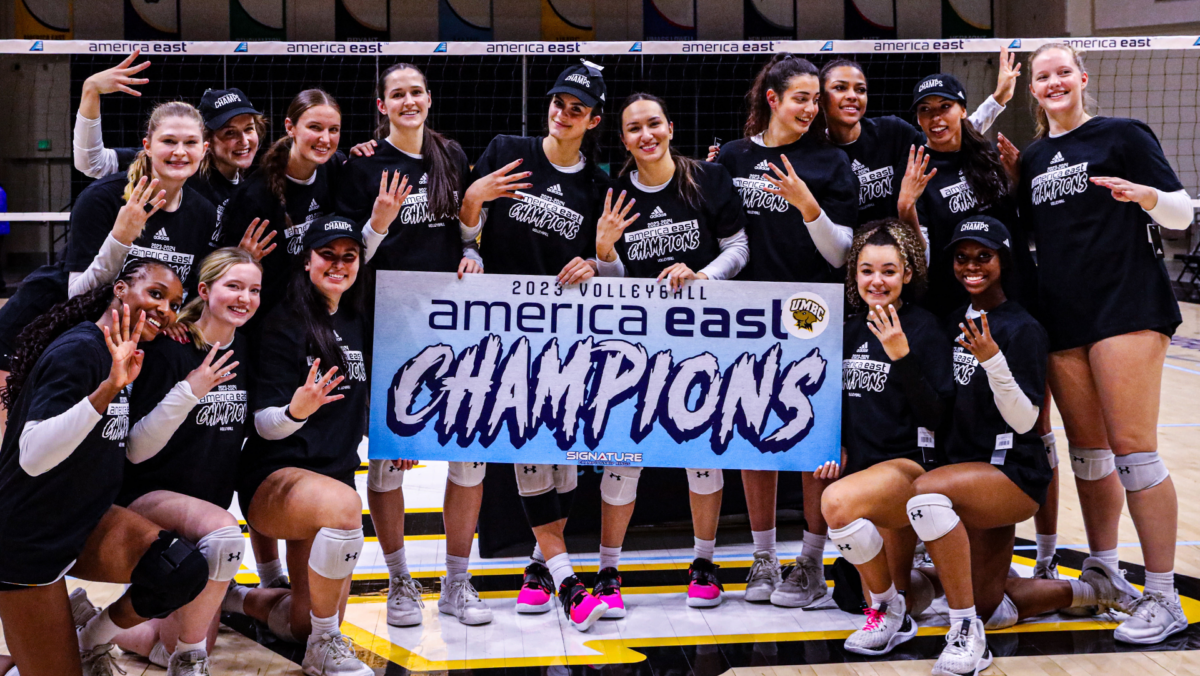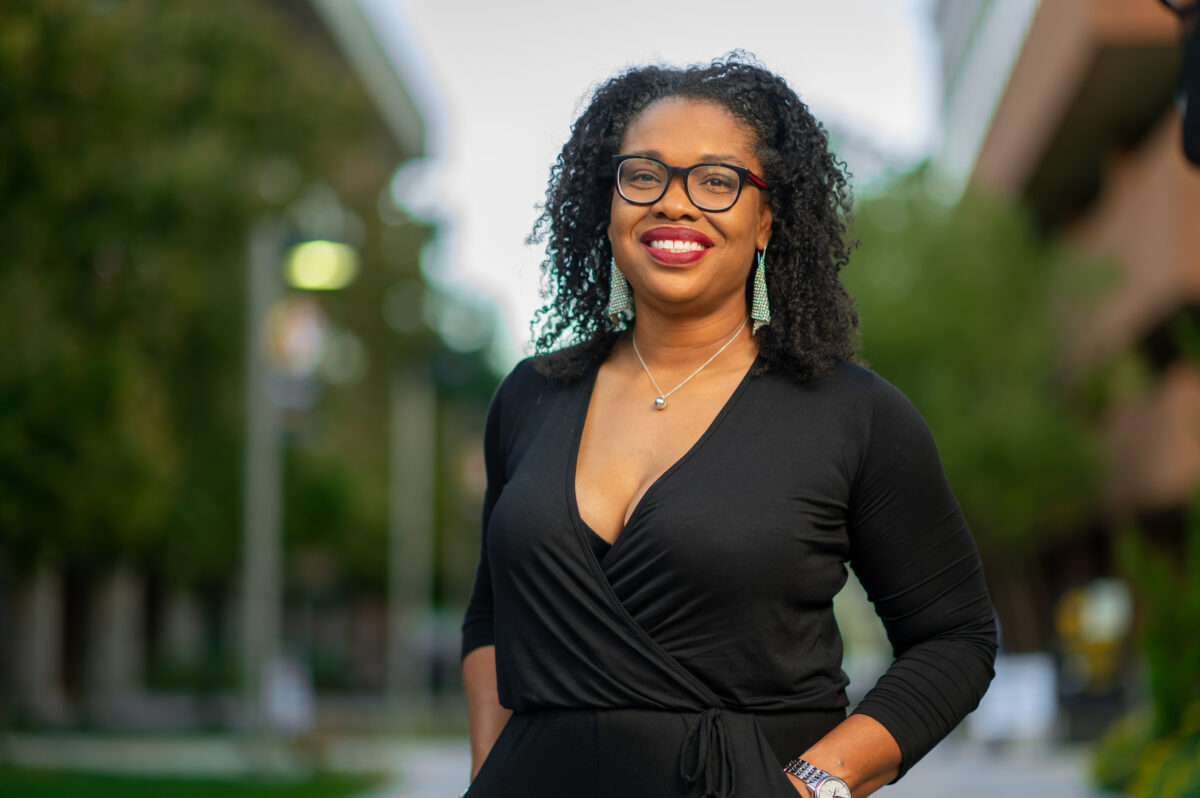UMBC Athletics Director Tim Hall Lays Out His Program for the Future of Retriever Fever
Interview by Richard Byrne ’86
When Tim Hall was appointed director of athletics, physical education and recreation in July 2013, he had some big shoes to fill. Longtime director Charles Brown had led UMBC’s program for 24 years, solidifying and growing the program’s Division I successes while keeping the department true to UMBC’s mission of emphasizing both sides of the student-athlete experience.
Yet in Hall’s first semester, he had the chance to oversee the ascent of UMBC men’s and women’s soccer to simultaneous 2013 America East conference championships and (in the case of the men’s team), lofty national rankings that have been rare for past UMBC teams.
Before coming to UMBC, Hall was director of athletics at the University of Missouri-Kansas City (UMKC) for six years, and he helped propel UMKC to new heights at the NCAA Division I level in athletic competitiveness, academic success, fund-raising and community service efforts. He has also worked at Kent State University, Eastern Kentucky University, St. Xavier College and Youngstown State University.
Interviewed recently in his office in the Retriever Activities Center, Hall radiated a quiet intensity of purpose – both in embracing the priority to balance academic and athletic success articulated by UMBC President Freeman A. Hrabowski, III, and making plans to take UMBC athletics to even greater success by involving its alumni and the wider community.
What have you learned about UMBC athletics and the school spirit of the university in your first year on campus?
Tim Hall: Certainly our mascot, “True Grit,” is appropriate. The word “grit” is associated with UMBC as an institution, and it’s synonymous with our athletics department, too. We’re a relatively young institution, and there’s a growing amount of school spirit. Our colors – black and gold – resonate with alumni. We have pockets of very strong support and spirit.
We are working to engender a stronger sense of pride in the university through our athletics programs: primarily men’s and women’s basketball, men’s and women’s soccer, men’s and women’s lacrosse. And a stronger sense of pride in the success of our athletics program I think will bode well for having a stronger sense of overall school spirit.
How do you assess where our athletics program is at the present moment? What challenges do we face as a university?
The landscape of college athletics is changing a great deal. We’ve gone through a massive overhaul of the legislative process and NCAA governance structure. The big five conferences – about 65 institutions – really are going to control, by and large, the governance structure and process. The word used a lot in anticipation of these changes is “permissive” – which means if you have the resources to do it, you can do it. There is going to be a lot of deregulation.
What it’s going to mean for UMBC as a smaller, mid-major division one program is that we’re going to have to prioritize our expenditures. We need to talk about return on investment – and, as I always say, return on objective. What are our major objectives? Our funding will have to be in line with those objectives if we’re going to realize success.
We love all of our sports at UMBC, but as an NCAA Division I-AAA school – which means we don’t sponsor football – our best opportunities for revenues are in soccer, lacrosse and basketball – primarily basketball, though. And for us to realize revenues from those sports, we have to put teams on the field that are competitive and can win more than they lose. You have to make sure that you have the coaches and the student-athletes and the tools that they need to be successful: scholarships, equipment, and appropriate facilities, etc.
That doesn’t mean we don’t want baseball or tennis or track and field to be successful. We want all of our programs to be successful.
You mentioned pockets of spirit and support. How does UMBC athletics build on that?
One of my initiatives as we put our strategic plan for UMBC athletics together is to grow and to engender more of a sense of pride from all constituencies, but specifically from our former student athletes.
When I got to UMBC last year, I was able to discern fairly quickly that our former student-athletes are very active within their own particular sports. For example, former lacrosse players come back to Homecoming and interact just with former teammates at lacrosse-specific functions. Soccer, the same. Tennis, the same. The phrase “siloed” would probably be accurate.
What we want to do is tear down some of the silos. We want to say: “Yes, your sport is important, but there’s strength in numbers. A rising tide raises all ships. We want you to come to events that are athletic department-wide and institution-wide.”
What opportunities are presented for UMBC athletics by the new facilities in the works right now – especially the new Events Center that is planned for 2017?
From an organizational perspective, having the new Events Center will allow us to move nearly all of our varsity programs to that facility. All of our coaches’ offices and all of our support units for intercollegiate athletics will be housed there. This move will allow us to then have the RAC refurbished to become specifically a facility for recreation and wellness and club sports, which would be more consistent with other similar universities. That’s a big growth step in our maturation process in the areas of athletics, recreation and physical education.
And, again, our basketball program has to be successful for us to be successful as a department, so having a venue that’s going to be one of the finest of its kind in the mid-Atlantic region will give us a recruiting advantage from as far north as Boston to as far south as Florida. Having this new state-of-the-art venue will put us in a different conversation in terms of prospective student athletes that we could recruit to UMBC.
You can’t be successful in getting new facilities and growing an intercollegiate athletic program without the support of the university’s leadership. President Hrabowski and Dr. Nancy Young, vice president of student affairs, want to see a very strong and vibrant athletics program, and we have aligned our activities based on the success of the student first, and the athlete second – but a real close second – to prepare them for graduation and to be future leaders of our society. I think that that’s really where we keep our focus.
What does UMBC offer to recruits by that strong emphasis on both elements of the term “student-athlete”? In an economy where recent graduates continue to struggle, is there an advantage in taking in the whole person, and being able to say: “This is a place where you’re going to compete and where you’re going to excel and be prepared to do almost anything?”
I believe that success in athletics and success in academics are not mutually exclusive. You can be successful and balanced in both.
We talk to our coaches all the time about finding student who fit in at UMBC academically, athletically and socially. If any one of those three is not present, then it probably won’t be the right fit for a young person. I think the three of them really go together. You spend a lot of time with your teammates as an athlete, you spend a lot of time with them pursuing academics, and then there’s some of that time that’s also social. You want to make sure that you’re maximizing each one of those facets of the university experience.
It’s rigorous to be a division one athlete. There are the maximum mandated hours that the NCAA allows you to practice and compete, but then there’s also the training that you do during the off season to keep yourself in peak physical shape.
If you put in the student piece, and then the athlete piece, and also put in the social “enjoy your college experience” piece, it doesn’t leave you a lot of time to prepare to enter the working world. We must find creative ways for internships, externships, shadowing opportunities, summer jobs, so that our young people are tangibly prepared to enter the workforce.
We partner with our Career Services Center to ensure that our student-athletes have all of the appropriate preparation that they need to be successful when they have graduated so that they are prepared to enter into the working world. I think that’s something we do very well here.
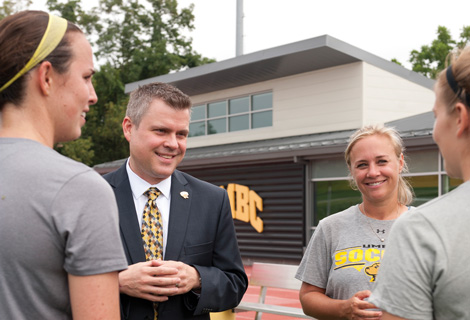
Where do alumni fit in to where you see UMBC athletics headed?
Alumni play a very integral role. They are crucial to our future success. You have to have alumni – that group of individuals that have come before – to really show that sense of unity, that sense of family, that sense of school spirit and pride to (and for) current and future student-athletes.
Over the coming three to five years, we’re implementing an aggressive strategic plan that has a strong external component to it. One of our highest priorities is further connecting and reconnecting athletic alumni to really be involved with our athletic department and our university at a level that’s commensurate with their personal and professional situation. If we’re successful, it will be through the support of those alums – their time, talent and treasure – that will give us the margin of excellence.
And when I say time, talent and treasure, we really need all three. For example, we need alums to give of their time to volunteer as part of an alumni mentoring program, where they can also manifest their talent. But we’re also going to need treasure. We’re going to need alums to step up and give – to say yes to our funding initiatives – whether they are facility-related or scholarship-related initiatives. There’s a direct correlation between alumni involvement and alumni investment and successful athletic programs.
And as the university looks to celebrate its 50th where does athletics fit in? And finding those special moments in the history of our athletic department and really celebrating those and using those as a launching pad for the next 20 to 30 to 50 years, I think is going to be really important.
Hopefully our success comes in terms of being able to recruit the right young men and women here to win championships, and graduate many fantastic, well-prepared young people who go on to be leaders of our society and contribute to the betterment of our world.
As an athletics department we don’t determine what our brand is: our constituencies determine what our brand is. And from an athletics perspective, I don’t think, in the past, we’ve been as consistent with our messaging as we need to be. What our alumni and our various constituencies will see going forward is, number one, more consistency in our messaging, and then, number two, that our messaging will be very closely aligned with that of the broader university.

